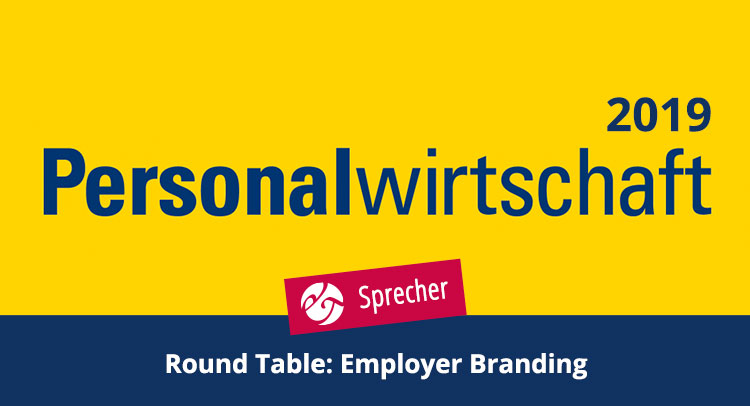
Eight experts sat at the personnel management HR Round table and discussed recent trends in employer branding – including our CCO and strategy expert Kai Pawlik. A look back at the meeting:
What is employer branding like today?
Strategic employer branding is essential to creating a strong, and above all sustainable employer brand and present the corporate culture. But how can employees present themselves as attractive employers to entice the best talents and gain their loyalty over the long term? „You have to develop a smart strategy” says Kai Pawlik. It doesn’t have to be rocket science. But if you as an employer know who you are and what core messages you can use to attract potential candidates, it is usually easier to appeal to your target audiences. Once the fundamental work is done, it can benefit the company for many years, allowing decisions on communication methods, occasions and messages to be made quicker and more simply. “Ideally, an employer brand provides a flexible framework for developing the communication strategy – not a corset. Brands need to have room to breathe. Different individual messages can pay off very well for a brand if they are concentrated and if the brand has been thoroughly defined”.
Individual appeal and big data
A glance at the diverse labor market shows that it may be time to rethink the old concept of classic target audiences: “Individual appeal and campaigns custom-tailored to individuals are important. “Yes – it does still play a role, the long-term communication designed to continuously contribute to and impact the employer image. Mass media and classic venues like PR and lobbying work are still a good choice for this kind of communication” explains Kai Pawlik. However, if companies want to use targeted communication for specific professional profiles or regions, then that communication must be more focused. In the future, algorithms will become better able to predict which messages are suitable for which audience. In addition, in the digital age we are collecting more and more data: KPIs, performance measurements, etc. In the future, HR managers will have to have a better understanding of data and data analysis, for example to be able to optimize processes. According to Kai Pawlik, HR has luckily been getting more marketing-heavily for several years. “And marketing is based on facts and figures, despite all the creativity involved. They help decide whether something is true or false. Not whether people like it or not.” HR, in other words, would do better to focus more on the numbers.
Conclusion
Employer branding is a broad field. What is important is that companies are aware of their own employer identity and can give both existing employees and candidates a promise as an employer – the EVP. Kai Pawlik believes there is still great reticence towards using technology. Technology can help deliver the right messages to the right candidates at the right time. But it is not a cure-all. “It’s just like in classic advertisement. You can lead the customer to water, but whether or not he drinks depends on a lot of other factors. For example, whether you can actually fulfill your communication promise” says Pawlik. The expert states, resolutely: “Personal content helps because it is relevant and believable: content is not advertisement. And advertisement is not content. Candidates can easily separate the two, and they know what they want: relevant content that they find convincing.” However, personal does not always mean “face-to-face,” but rather personal content, for instance from ambassadors or influencers.
The better, more authentic and continuous the ambassadors for an employee brand are in their actions, the more successful the employer brand will be in winning the future “war for talents”.